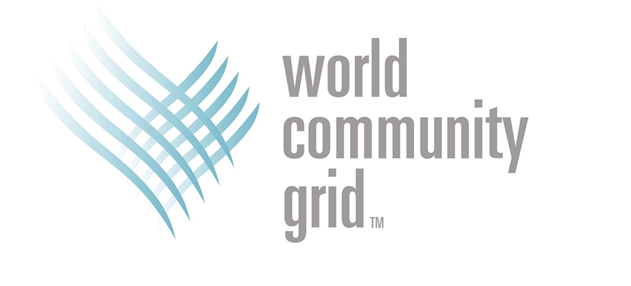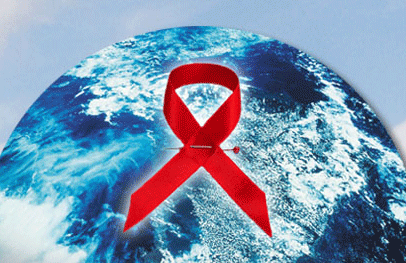World Community Grid: Distributed Computing Network
Good afternoon, dear Habrausers!
Have you ever thought about how you can make your personal contribution to the fight against cancer, AIDS or malaria?
IBM Corporation Provides Grid Technology for Global Research Projects!

World community grid
The World Community Grid is a global community of PC users who provide unused time for their computing systems for implementing global research initiatives (combating AIDS and oncological diseases, modeling and predicting natural phenomena, etc.).
Those. grid computing is a technology that brings together the computing resources of thousands and millions of individual computers into a giant unified “virtual” system with tremendous computing power.
The global humanitarian project World Community Grid was launched by IBM in 2004 with the support of the largest research centers in the world. World Community Grid IT resources allow you to analyze in one day such an amount of data that would take about 130 years to process on a regular computer.
To date, around the world in the WCG network, there are 604,494 users using 2,175,094 PCs. The total calculation time is 661,296 years.

To participate in the projects, it is enough to register on the site and download the free program.
Infrastructure World Community Grid can be connected to computers running on Windows, Mac and Linux.
After registration, the participant selects a project for which he wants to provide his computer resources. Projects are selected by an independent Expert Council, which includes leading scientists from different countries.
Having joined the network, the user receives a separate computing task on his computer (the project is divided by IBM specialists into millions of subtasks). Having completed the task, the PC transfers the results of the calculations to the server and receives a new task. Calculations are performed only when the computer is not involved (thus, participation in the project does not interfere with the implementation of the main tasks). The calculation results sent to the server are automatically connected to the results of other tasks, and form the overall result.

Below is a description of several projects in which you can take part.
Computing for clean water
The aim of the project is to study the molecular mechanisms of water passage through carbon nanotubes, which can become an inexpensive and effective replacement for the "filling" of modern filters for water purification.
Worldwide, more than 1.2 billion people do not have access to clean drinking water, and 2.6 billion do not have sanitation in their homes. As a result of these problems, millions of people die each year. The problem is compounded by the relative high cost of polluted water filtration technologies, especially for socially unprotected sections of the population. Desalination of sea water is an even less affordable thing, although it can potentially solve the problem with drinking water in many regions.
A comprehensive molecular simulation of the dynamics of motion and interaction of water molecules with nanotubes is planned at WCG facilities.
Computer simulation will help, in particular, clarify the question of the unusual behavior of water molecules in contact with nanotubes, when water begins to behave like ice. Having dealt with this problem, it is possible to achieve a minimum resistance of water molecules when passing through nanotubes and other nanoporous materials, and thus increase the speed of water purification.

Discovering Dengue Drugs - Together / Find Fever Cures
The project aims to detect potential medicinal compounds that block the reproduction of viruses of the family Flaviviridae in the human body. These include viruses that cause such dangerous diseases as Dengue fever, yellow fever, West Nile fever, hepatitis C, etc.
About 40% of the world's population live in regions where it is highly likely to become infected with one of these viruses. Unfortunately, effective drugs for the treatment of these diseases do not exist, and palliative therapy is too expensive and can only slightly reduce mortality rates among patients.
As part of the Discovering Dengue Drugs - Together project, scientists are betting on the search for NS3 viral protease inhibitors.
In August 2009, the first phase of the project ended. The calculations were carried out using a specialized molecular docking program, AutoDock, developed by Dr. Olson and his staff at the Scripps Research Institute.
During the calculations, the interaction with the NS3 protease was simulated for about 3 million potentially effective small molecules, of which several thousand most promising were selected. But, unfortunately, 90-95% of the compounds were ineffective in the laboratory.
In the second phase of the Discovering Dengue Drugs - Together project, it is planned to weed out the false positive compounds found in the first phase using another molecular docking program, CHARMM, developed by Martin Karplus and his staff at Harvard.

Help Conquer Cancer
The mission of the project is to improve the results of protein research using X-ray crystallography (X-ray Crystallography), which will help researchers understand how cancer forms, how it develops, and how it can be affected.
In order to significantly affect the understanding of cancer and its treatment, it is necessary not only to discover new therapeutic approaches aimed at the study of metastases (the process of spreading cancer to other organs of the body), but also to find some markers or structural labels with which to to conduct an early diagnosis.
While studying many forms of cancer, researchers were able to make several discoveries with a limited understanding of the proteins involved in cancer formation. But in order to better understand and find more effective methods of treatment, it is necessary to study all the proteins involved in the process, their structure and functions.
Using x-ray crystallography, researchers will be able to obtain more accurate data on the structure of these proteins. This should lead to a deeper understanding of the functions of cancer-forming proteins, and allow finding potential cures for a deadly disease.
The project processes more than 105 million images.

Detailed information on all projects can be found on the World Community Grid website .

Global Collaboration and Partnership
IBM aims to expand the World Community Grid network by attracting new members from different countries.
In Russia at the moment there are 3,603 participants who have involved 21,717 computers. The total computation time is 5,656 years.
In addition to new entrants, IBM is looking for research projects from Russia to provide grid technologies.
Preference is given to projects related to the study and protection of the environment. This may be modeling of natural phenomena, natural disasters, climate change, assessment of natural resources, conservation and restoration of landscapes, etc. The criteria for the selection of projects are the scientific significance, the global nature of the problem and the ability to divide the task into many sub-tasks.
Researchers interested in using WCG resources to carry out their projects can get advice at info@ru.ibm.com. Applications for participation in the project are made out on the World Community Grid website .
According to the most conservative estimates, projects on average need 184 thousand years of processor time, and if you take the maximum, it’s 10-100 times more.
But no matter how much computing resources are eventually required, it can be said with certainty that a task has not yet been set which could not be handled by the multimillion-dollar volunteer army of personal computer owners who donate their hard-earned gigahertz and kilowatts in the name of science :)
Would you like to participate? Then connect to the World Community Grid to make the world a little better!
